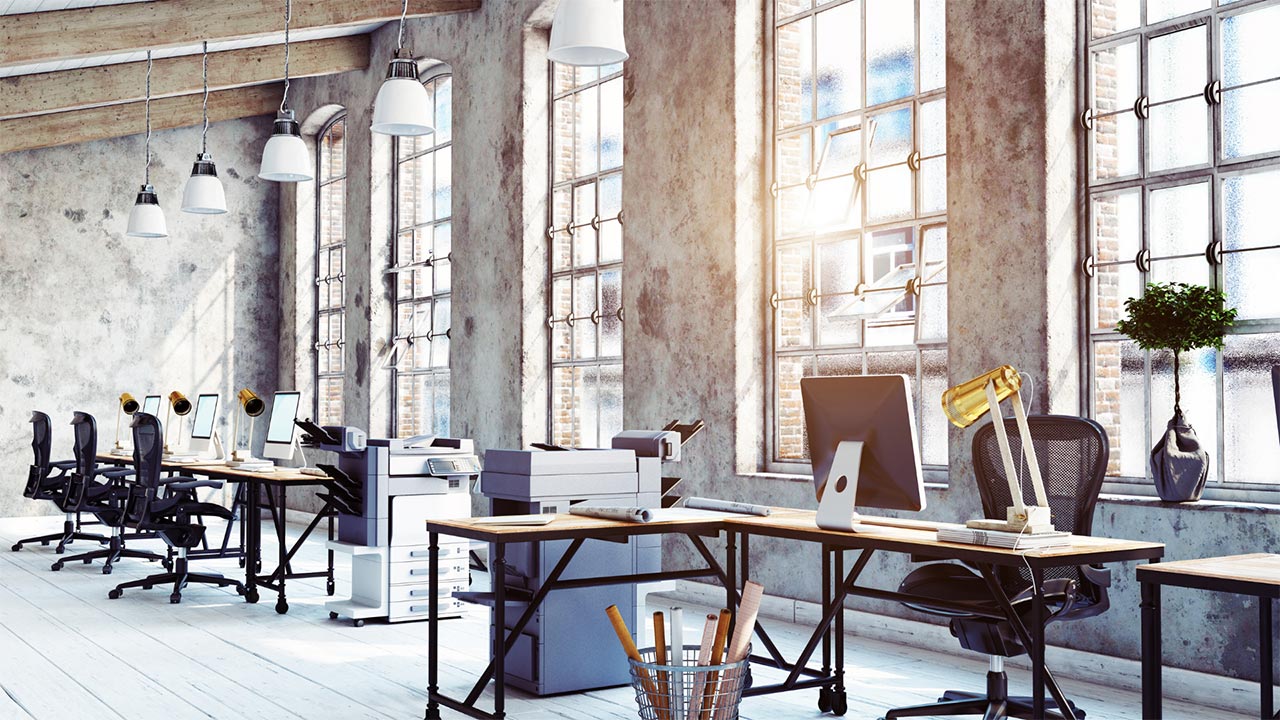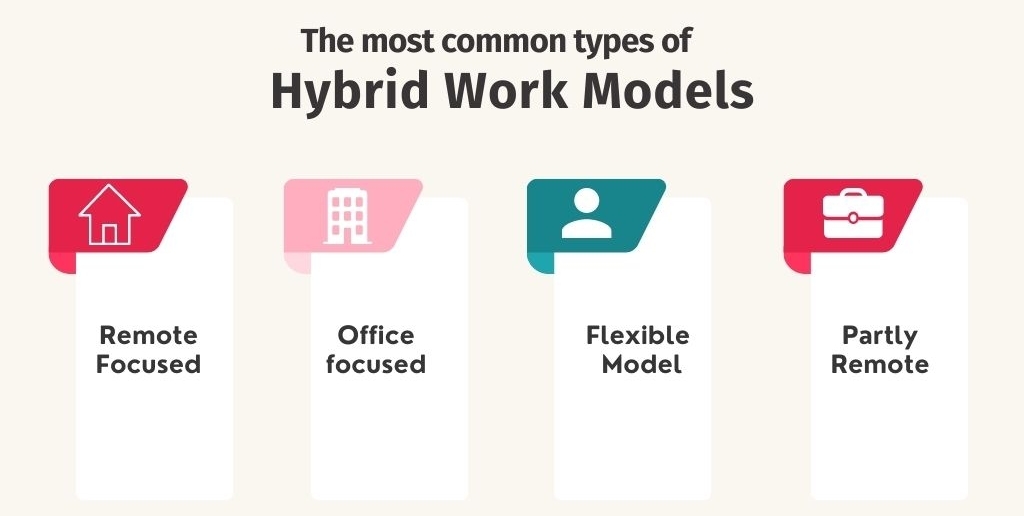The Covid-19 virus has lasted for three years, during which all walks of life have suffered a certain degree of impact and loss, and the impact of the workplace, which occupies most people’s lives, is also huge, and even has a ripple effect, triggering the ideas of senior leaders and CRE of various companies to reform the office environment. We all know that maximizing profit is the basic purpose of business existence. During the lockdown, the company’s chief financial officer struggled with empty offices, which have been burning up rent and other overhead even as many colleagues telecommute. So the question is, does the company need an office that big? How can the company maximize the use of the office space it has without compromising work order and efficiency? Is there a more flexible alternative to the traditional office? What smart technologies could create a smart workspace and human-centric working environment so that employees can feel comfortable working in the company and be more productive during the pandemic? In addition, what solutions should real estate companies take to deal with these challenges as small companies cancel their leases and buildings have to be closed due to the spread of the virus in office buildings? As with any other business metric, the answers to these questions must be supported by accurate data. Technology now makes it possible to take and use office space and other data and turn it into business intelligence to make smarter decisions about how to scale a business and give it a competitive edge in the industry.
However, new reforms cannot just focus on addressing the challenges posed by COVID-19 virus; longer-term and flexible plans can adapt to changing circumstances. Therefore, before organizations and CRE can make decisions about what options to choose, it is essential to have a clear understanding of the areas that are required to be addressed and how any options might evolve to fit the changing environment.
Smart workspace design for the post-COVID-19 workplace
Flexibility is important in the post-pandemic world. Most spaces are not dedicated to one person or purpose. Instead, workplaces exist to accommodate anyone who needs that kind of space. Thus, office space planners must be prepared for sudden surges in attendance, for sudden disbanding of teams, and for providing a mix of private and public areas, among other things.
By 2019, some desks are expected to be reserved for 40 hours a week for specific people. Now, hot desks are coming into the smart office and becoming a defining feature of contemporary office life. Whoever needs it, if they need it, the table is there.
Instead of assigning desks to individuals, Hot desking provides employees with a set amount of office space on a first-come, first-served basis. Less office space means less demand for office space, lower real estate costs, and an opportunity to maximize space and even improve overall efficiency. Anyone who needs it can quickly and easily use any available desk without looking at the space occupancy arrangement. And because office supplies are shared, employees can
Free use of office supplies at your fingertips. The desk is no longer a private thing, eliminating the need for employees to spend extra energy on decorating their office and desktop environment so that they can focus more on the task at hand.

Hybrid working model
Today’s employees value work-life balance and tend to be mixed in terms of flexibility in how much time they spend in the office and elsewhere. This means analyzing workflows and using attendance data to make reliable forecasts of future demand.
That’s because, in the wake of the pandemic, the new hybrid work culture demands plenty of flexibility. Employees can be flexible about whether or not they have to go to the office according to their work needs and their own time. They can choose to be remote workers all the time and only show up for special events or meetings, they can also be on-site workers if they prefer to work at the office most of the time. But there is also a balance to be struck when a company adopts a hybrid workplace, so as not to lose morale or create organizational problems. Figuring out the exact balance can be tricky, but when companies can at least decide how much workspace a hybrid office needs, there are ways to help you make a better decision.

What kinds of workstations does your office space plan need?
A properly mixed area designed for different types of work is a key element of any smart workspace. In a typical workday, different types of work require different sizes of meeting spaces. In addition to a separate workstation, you may need to have other essentials in place, such as a private space to answer the phone, a designated quiet room, or a meeting space. The number of rooms per room will vary according to different needs, so mixing is an optimal choice:
- Private/quiet space. Whether it’s answering the phone in an enclosed cubicle or away from distractions elsewhere, it’s necessary that these Spaces exist.
- Space for small gatherings. “Small” can mean two, six, or more, depending on the size of the office, but office space planning needs to take this requirement into account when small teams get together to brainstorm.
- Large and small meeting areas. Again, the definitions of “small” and “large” will vary, but sometimes the team’s employees need to be in the same room. Be sure to include standing space in these areas when planning your meeting space, as many times there will be more people than seats for meetings.
4 steps to follow when establishing your smart workspace
Here are four steps to make redeploying your workspace easier:
- Learn how your property is being used. Know when the rush hour is. Which rooms and spaces are most used and which are mostly empty? Those long idle spaces can be used for other purposes or directly eliminated, saving some rent.
- You need to define and deploy techniques that collate data about how space is being used. It’s much easier to redesign a reimagined space when you have data showing how to use existing space. The best way to gain this information is to use a solution that is scalable and easy to deploy while keeping the total cost of ownership within your capabilities. An ideal solution will also provide historical and real-time data, allowing you to see how the space is being used over time. Once you’ve made this choice, make sure you deploy it with a specific goal in mind — to give you as much insight as possible into how your current workspace meets or doesn’t meet your needs.
- Redesign your smart workspace using data. Once you have information from different departments at different times, you can see if your work style matches your job commitments.
- Measures and validates, and integrates with other systems to improve productivity. The same digital network can be used to measure any improvements you make when making changes or reconfiguring. In addition, data can be shared across systems to optimize room reservations, energy use, cleaning schedules, etc.
What can our IoT solution specifically do for your smart workspace?
Workplace Utilization
One of the effects of the pandemic over the past three years has been in the changing way we use space, with stakeholders such as property managers facing the challenge of assessing how much workspace they really need. This different method of more careful alignment of property commitments with actual needs carried over into the post-pandemic back-to-work movement, where stakeholders now no longer need to rely on guesswork about how much workspace they need.
Digital solutions can now provide highly accurate data on the actual use of a given space. Occupancy rates and foot traffic give you a real-time picture of how many people are in a space, where they are concentrated, how much they are spending there, and so on. Combining and analyzing historical data can help you identify peak and peak times and quiet times, understand how much has actually changed, and how much flexibility is needed to adapt to that change. It is much easier to optimize the use of workplaces already occupied with these insights, better understand how much space is really needed for any potential expansion, and adjust assets and real estate needs in general.
From real-time tracking of room and even seat level occupancy to precise foot traffic with real-time access to any monitored area and more, MOKOSmart‘s IoT solutions provide data-driven insights. Enabled by the deep insight into occupancy and office environments of Bluetooth ®le based networks, you can make informed decisions about smart workspace and design issues, optimizing the space required for implementation while maximizing the employee experience.
Occupant Experience
Technological change in the workplace is also making time spent in the workplace more productive.
- Wayfinding systems are increasingly a standard feature in modern offices, especially in large and complex Spaces. For tourists, vendors, and other temporary occupants unfamiliar with building layouts, deploying H2 navigation beacon can get them to their destinations faster, saving a lot of wayfinding time.
- Using PIR PRESENCE Beacons to access real-time occupancy levels, the resident experience is also enhanced. This is a slight but important difference from the occupancy levels mentioned earlier, which provide historical data that can help determine how much space an office really needs to function properly.
- Asset location and status tracking. Real-time occupancy enables employees in the here and now to immediately see the availability of any space throughout the smart workspace, without having to physically go to the site to confirm availability. In addition, searching for various office facilities and supplies can be a waste of time for everyone. With location and status trackers such as M2, you can find what you need with one click and get notifications about what isn’t working properly. It’s all part of an effort to improve the office experience and eliminate distractions.

Building Safety & Wellness in the modern workplace
Building safety and health technologies in the smart workspace help to make the time people spend in buildings healthy, safe, and comfortable.
- An environment monitor tracks temperature, humidity, and air quality to make sure they’re all within preset parameters. An alarm can be sent to notify building managers when comfort or safety limits are exceeded. Since the pandemic goes viral, the utility of environmental monitoring has been emphasized, particularly data on temperature and humidity, as humidity levels may be a major contributing factor behind the creation of an environment conducive to virus growth. This environmental metric can be tracked with temperature and humidity sensors such as H4 or LW002-TH.
- Better personal safety for employees is another way to show how technology is changing the workplace. Coercive policies against staff can now be significantly strengthened through the use of a wearable badge such as the W5, and H3 digitally linked to a location tracking network. For instance, when healthcare workers have to deal with an aggressive or potentially threatening patient, they can just touch a button on the badge for instant assistance. Management can immediately know their exact location and help personnel arrive on time to avoid further escalation. In addition, in large, complex Spaces, it can be challenging to ensure that everybody has safely left the building, but again location technology provides a solution. By locating the wearable technology, it can not only quickly confirm those specific people are out of harm’s way, but also identify those who remain in the building and their specific location. This has gained valuable information to speed up aid.

If you’re looking for ways to create a more habitant-friendly workplace via human-centric technology, reach out to us and we’ll show you more viable solutions for your smart workspace.
Continue Reading About our products for smart workspace
























